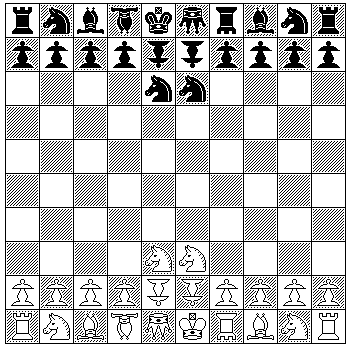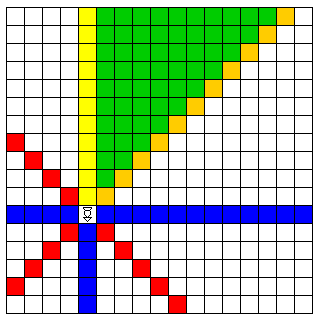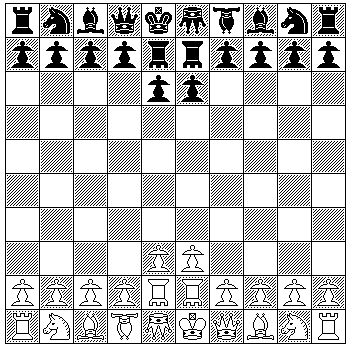
This game is a form of Turkish Great Chess played on a 10 by 10 board.
Its board layout is as shown in the diagram below:

Note that the symmetry of the board is central, rather than vertical; that is, each player's King is on his own right, while each player's Amazon is on his own left.
The pieces on the back row are: Rook, Knight, Bishop, Princess, Amazon, King, Empress, Bishop, Knight, Rook.
The second row consists of four Pawns, two Urdabeqins, and four Pawns.
The third row has two additional Knights in the central two squares, but is otherwise empty.
The Urdabeqin is described as having a move of one square, towards the opponent's King. I'm not sure what that means exactly.
One possibility would be to divide the board around the Urdabeqin into eight zones, using the moves of the Nightrighder as the dividing lines between them:

Thus, the Urdabeqin could move forwards if the opponent's King is in the zone shown in red in front of the Urdabeqin, or backwards if in the zone shown in red behind the piece; it could move to the left or the right if the opponent's King is in the zone shown in blue on the same side of the piece, and it could move diagonally in the direction of the appropriate zone shown in white if the opponent's King is in that zone of the eight possibilities.
In my opinion, however, such a rule would be too complicated for a practical game.
Therefore, I would propose a slightly more liberal rule:
If the opponent's King lies directly along a Queen line from the Urdabeqin, then the Urdabeqin can move one space in only that direction; if it lies between two Queen lines from the Urdabeqin, however, then the Urdabeqin may move one space along either of those Queen lines.

Thus, if the opponent's King is in the yellow line in front of the Urdabeqin, it can only move forwards; if the opponent's King is in the orange diagonal, it can only move diagonally forwards to the right; and if it is on one of the squares shown in green, then the Urdabeqin can make either move.
Another way to avoid dealing with the move of the Urdabeqin would be to play instead this form of Great Chess known from a manuscript in India, which, as it has a very similar layout to that of Atranj, is likely to have been a descendant of that game:

Here, the two Knights in front of the Urdabeqins are replaced by two Pawns.
The Urdabeqins are replaced by two pieces with the move of the Empress, that of a Rook plus that of a Knight; these pieces are called Dabbabas in this game.
The sequence of pieces in the last row is: Rook, Knight, Bishop, Princess, Amazon, King, Queen, Bishop, Knight, Rook.
The Amazon, called a Giraffe in this game, has the move of a Queen plus a Knight.
The Princess, called a Vizier in this game, has the move of a Bishop plus a Knight.
For those looking for a simple and uncomplicated variant, which merely adds the Amazon, Princess, and Empress to the game, this existing traditional layout may be ideal.